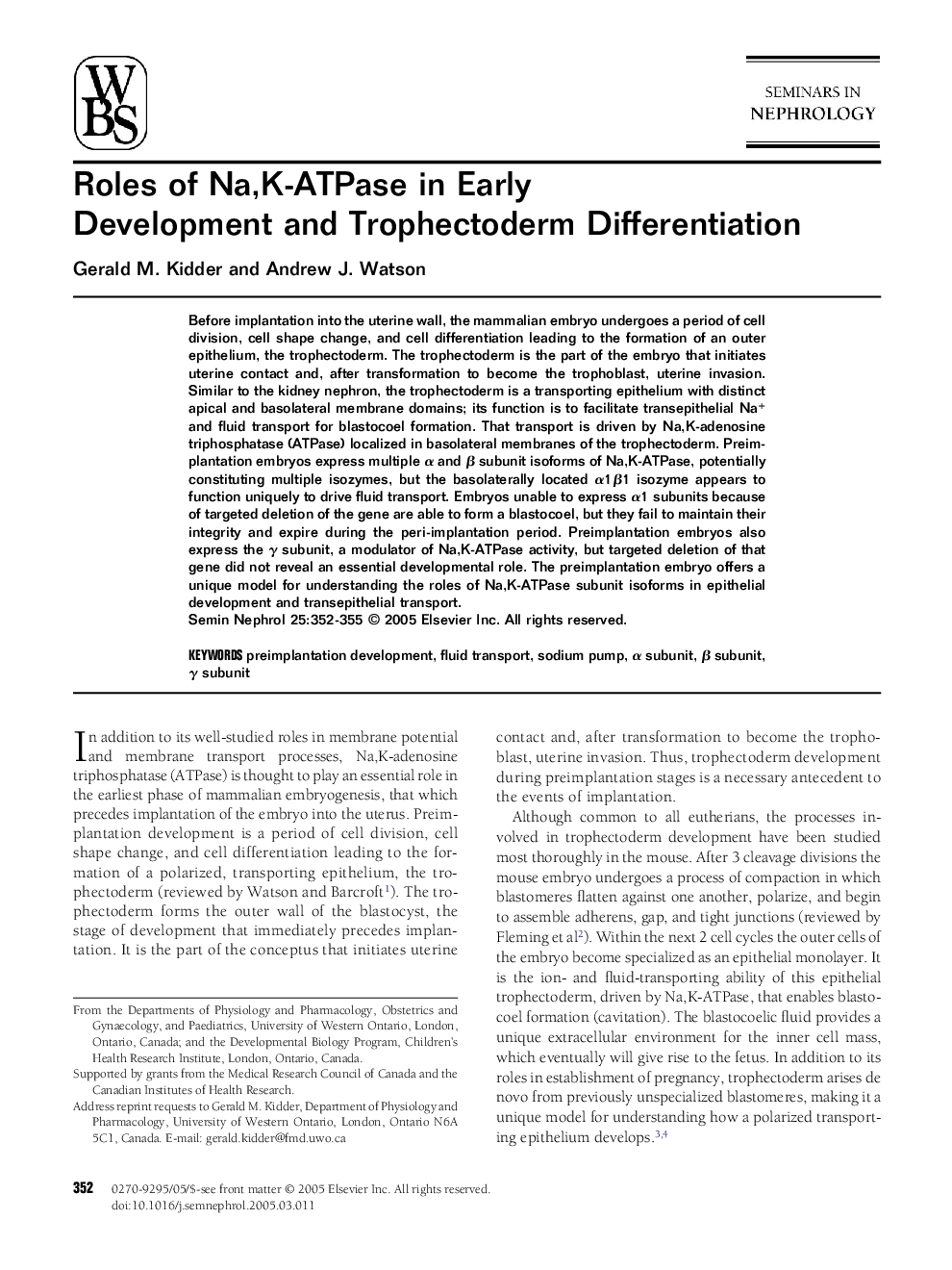| Article ID | Journal | Published Year | Pages | File Type |
|---|---|---|---|---|
| 9311425 | Seminars in Nephrology | 2005 | 4 Pages |
Abstract
Before implantation into the uterine wall, the mammalian embryo undergoes a period of cell division, cell shape change, and cell differentiation leading to the formation of an outer epithelium, the trophectoderm. The trophectoderm is the part of the embryo that initiates uterine contact and, after transformation to become the trophoblast, uterine invasion. Similar to the kidney nephron, the trophectoderm is a transporting epithelium with distinct apical and basolateral membrane domains; its function is to facilitate transepithelial Na+ and fluid transport for blastocoel formation. That transport is driven by Na,K-adenosine triphosphatase (ATPase) localized in basolateral membranes of the trophectoderm. Preimplantation embryos express multiple α and β subunit isoforms of Na,K-ATPase, potentially constituting multiple isozymes, but the basolaterally located α1β1 isozyme appears to function uniquely to drive fluid transport. Embryos unable to express α1 subunits because of targeted deletion of the gene are able to form a blastocoel, but they fail to maintain their integrity and expire during the peri-implantation period. Preimplantation embryos also express the γ subunit, a modulator of Na,K-ATPase activity, but targeted deletion of that gene did not reveal an essential developmental role. The preimplantation embryo offers a unique model for understanding the roles of Na,K-ATPase subunit isoforms in epithelial development and transepithelial transport.
Related Topics
Health Sciences
Medicine and Dentistry
Nephrology
Authors
Gerald M. Kidder, Andrew J. Watson,
